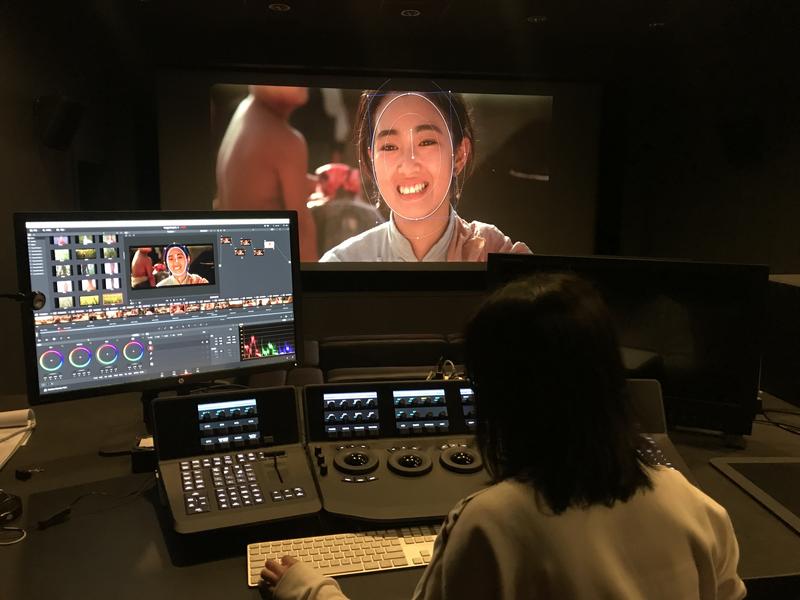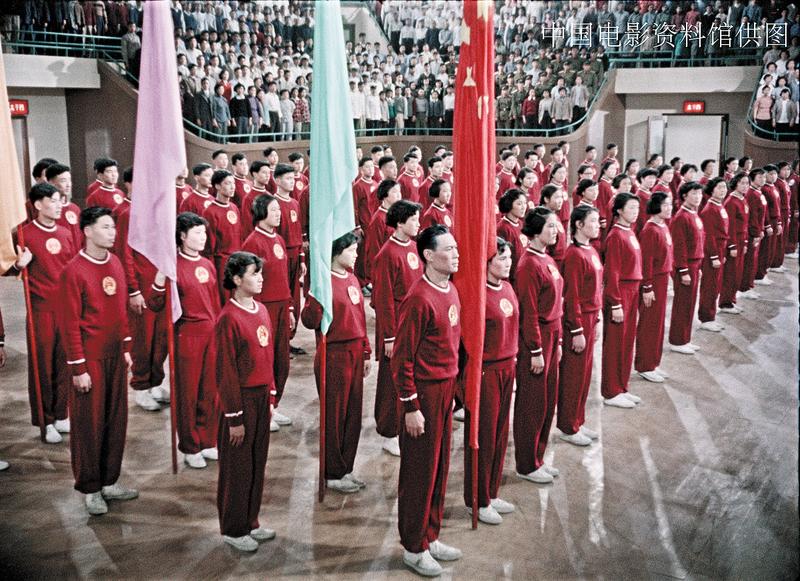Preserving old films is important as they provide a tantalizing glimpse into the past, Xu Fan reports.
 A restorer at the China Film Archive works on footage of actress Gong Li's 1988 classic Red Sorghum. (PHOYO COURTESY OF THE CHINA FILM ARCHIVE)
A restorer at the China Film Archive works on footage of actress Gong Li's 1988 classic Red Sorghum. (PHOYO COURTESY OF THE CHINA FILM ARCHIVE)
Every museum has its star attraction. For the China Film Archive, the largest of its kind in the country, its most prized possession is the set of reels of Laborer's Love, a silent movie shot more than a century ago that is considered the earliest complete film still capable of being screened in China.
Under the helm of Zhang Shichuan, a prolific director who produced in excess of 150 films, the 22-minute tale also known as Romance of a Fruit Peddler tells the story of a carpenter who falls in love with a doctor's daughter and his efforts to overcome the class differences and win recognition from his future father-in-law.
The reels of the movie have been preserved in Xi'an, capital of Northwest China's Shaanxi province, in one of the two vaults constructed by the China Film Archive to store vintage reels of classic movies and documentaries. These reels constitute the century-long history of Chinese cinema and record the vicissitudes of social change.
As some of the old reels are made of flammable cellulose nitrate films, which could quickly burst into flames if they are not handled properly, the two vaults — with the other located in eastern Beijing — have maintained their in-house temperature of between — 1 C and 5 C as well as maintaining humidity around 40 percent.
 Scenes from restored Chinese films that are considered classics — The Eternal Wave (1958). (PHOYO COURTESY OF THE CHINA FILM ARCHIVE)
Scenes from restored Chinese films that are considered classics — The Eternal Wave (1958). (PHOYO COURTESY OF THE CHINA FILM ARCHIVE)
The strict preservation conditions also made the transport of the old films a "thrilling" task.
Last summer, Wang Zheng, a veteran film restorer who has worked at the archive's Beijing headquarters for 16 years, was assigned to fetch the reels of Laborer's Love. The movie was to be digitally restored and sent to screen during Il Cinema Ritrovato, an influential festival held in Bologna, Italy, for showcasing the latest restored films.
"The biggest challenge was ensuring the safety of the movie's reels during the transportation and scanning procedures. It was shot on nitrate-based film. Also known as 'flammable film', it will spontaneously combust if the temperature surpasses 40 C, and the fires are almost impossible to extinguish," explains Wang.
Almost like a race against time, every step of the transportation was cautiously planned. The reels were examined and cleaned before they were taken out from the Xi'an vault and then moved into a vehicle-adapted refrigerator specially equipped for the trip.
 Scenes from restored Chinese films that are considered classics — The Cave of the Silken Web (1927). (PHOYO COURTESY OF THE CHINA FILM ARCHIVE)
Scenes from restored Chinese films that are considered classics — The Cave of the Silken Web (1927). (PHOYO COURTESY OF THE CHINA FILM ARCHIVE)
To avoid any temperature rise and other potential risks after the long journey, Wang didn't directly drive from Xi'an back to Beijing but chose an expressway service area in Baoding, Hebei province, as a transit station to transfer the reels to his colleagues, who were waiting for him in advance.
"Before scanning the reels to make a digitally restored version, we adjusted the temperature and humidity to the best state," says Wang, adding that they also adopted a slow-paced scanning method to avoid electrostatic friction.
Currently restoring a total of more than 450,000 cans of old films — respectively 250,000 in Xi'an and 200,000 in Beijing — the archive has conserved most of the classics that have occupied their distinctive seats in the history of Chinese cinema.
Some of the archive's most highlighted restored movies include The Cave of the Silken Web (1927), Woman Basketball Player No 5 (1957) and The Eternal Wave (1958).
 Scenes from restored Chinese films that are considered classics — Laborer's Love (1922). (PHOYO COURTESY OF THE CHINA FILM ARCHIVE)
Scenes from restored Chinese films that are considered classics — Laborer's Love (1922). (PHOYO COURTESY OF THE CHINA FILM ARCHIVE)
Li Tao, director of the archive's digital resource management department, says the restoration of old films has high academic value, allowing researchers to review the filming techniques and storytelling abilities of Chinese films from decades or even a century ago.
For instance, the subtitles of Laborer's Love display different colors, a typical characteristic of the old film stocks produced by the US company Kodak early last century.
"The movie was shot in 1922, indicating that Chinese filmmakers at that time were quite fashionable," says Li.
"From the turbulent years during wartime to the founding of New China and the rapid development in recent decades, some of the old film reels must have interesting stories behind them," he adds.
"Besides, the China Film Archive has also collected a lot of old film posters, mostly hand-painted by the staff of Chinese theaters at that time. All these consist of valuable heritage to help scholars discover many little-known stories in the history of Chinese cinema," says Li.
 Scenes from restored Chinese films that are considered classics — Woman Basketball Player No 5 (1957). (PHOYO COURTESY OF THE CHINA FILM ARCHIVE)
Scenes from restored Chinese films that are considered classics — Woman Basketball Player No 5 (1957). (PHOYO COURTESY OF THE CHINA FILM ARCHIVE)
Li also introduces that the primary principle of restoring old films is to "restore them to their original condition". Hence, it is necessary for the film restoration specialists to carefully research the history and ensure that the restored images and refilled colors are in line with the era and background of the story, or with the director's original intent, he says.
For example, when the archive was restoring The Eternal Wave, an espionage movie set in the late 1940s, Li recalls that the restorers spent a lot of time and effort to check the historical details, varying from the color of the epaulets on the military uniforms of the Communist Party of China's army to a type of vase at Shanghai's renowned Peace Hotel.
In 2021, The Eternal Wave, which was originally shot and released in black and white, was restored to a 4K version full of color, the first of its kind in China. When the restored version was rescreened across domestic theaters, it earned more than 3.4 million yuan ($493,200), making it an inspirational case for generating financial profits, says Sha Dan, a veteran movie critic.
"The case has provided a good pattern for how to balance the cultural preservation and market usage, thus helping us better preserve old movies and benefit academic research," says Sha.
Contact the writer at xufan@chinadaily.com.cn


